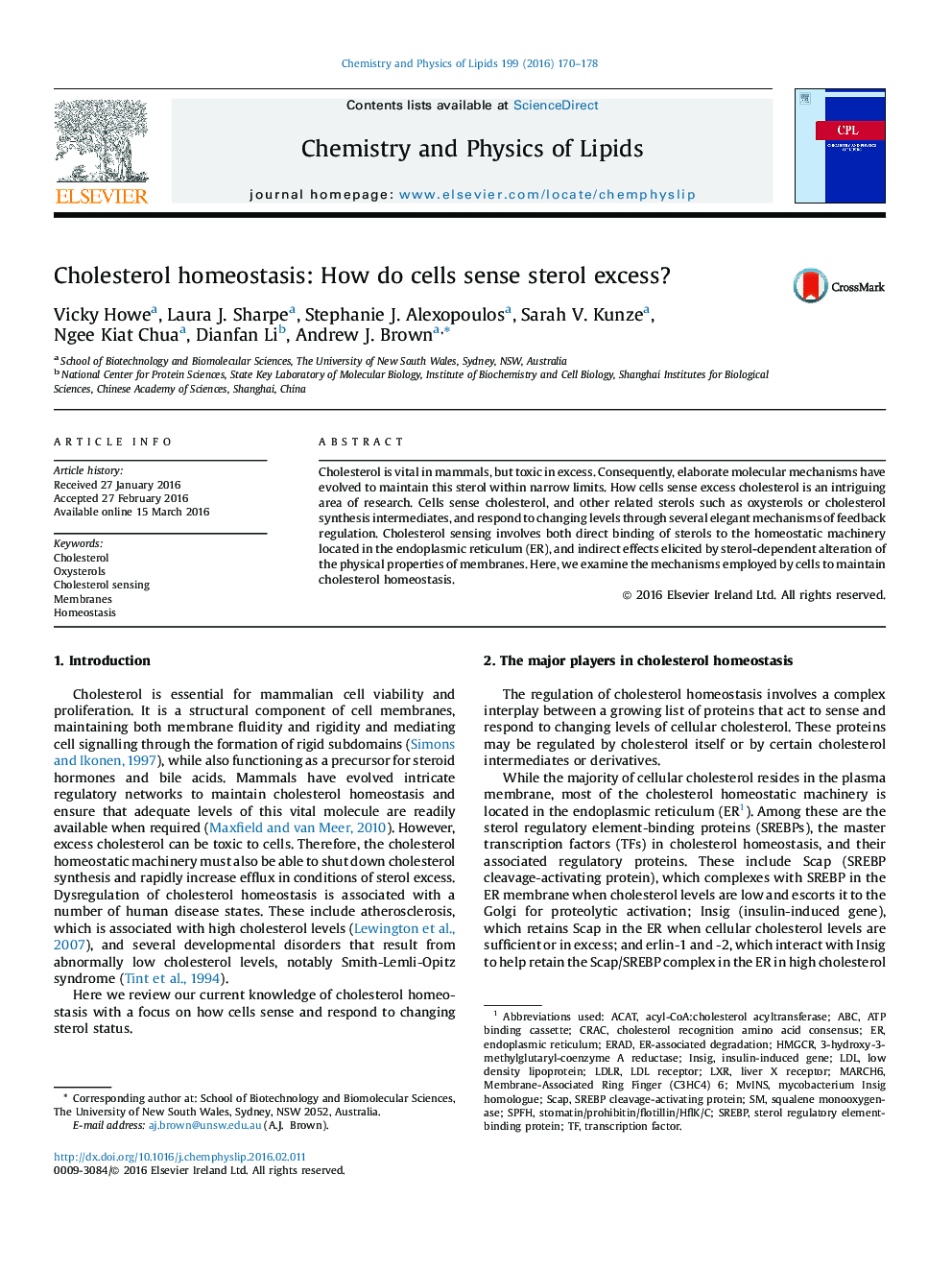| Article ID | Journal | Published Year | Pages | File Type |
|---|---|---|---|---|
| 1253198 | Chemistry and Physics of Lipids | 2016 | 9 Pages |
•Transcriptional and post-translational mechanisms of cholesterol homeostasis are regulated by sterols, sterol-sensing proteins and the plasma and ER membranes.•Sterols can either bind directly to proteins or alter membrane properties to elicit regulatory responses.•Many complex regulation mechanisms exist to sense sterol excess that remain to be explored.
Cholesterol is vital in mammals, but toxic in excess. Consequently, elaborate molecular mechanisms have evolved to maintain this sterol within narrow limits. How cells sense excess cholesterol is an intriguing area of research. Cells sense cholesterol, and other related sterols such as oxysterols or cholesterol synthesis intermediates, and respond to changing levels through several elegant mechanisms of feedback regulation. Cholesterol sensing involves both direct binding of sterols to the homeostatic machinery located in the endoplasmic reticulum (ER), and indirect effects elicited by sterol-dependent alteration of the physical properties of membranes. Here, we examine the mechanisms employed by cells to maintain cholesterol homeostasis.
